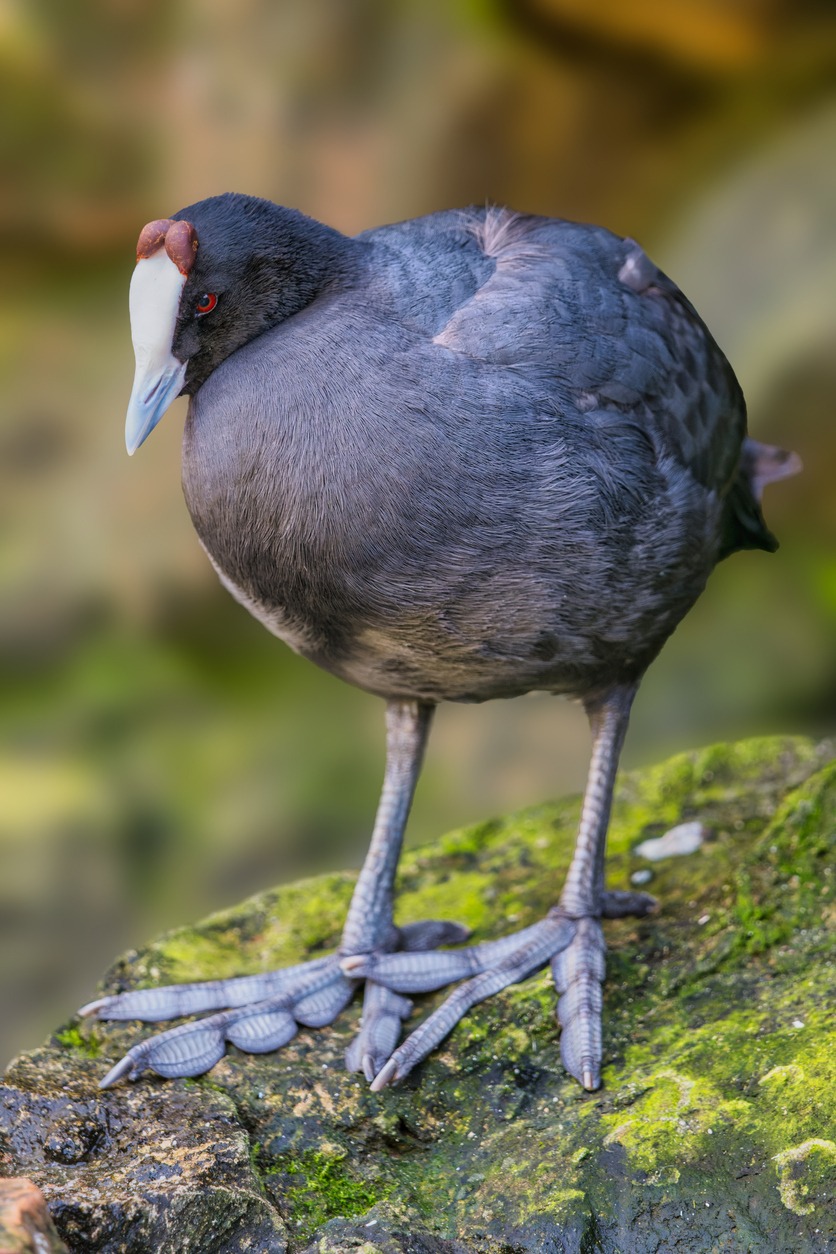It is a sooty grayish bird with a whitish frontal shield and beak. Its adults grow two tiny reddish horns during the breeding season. However, outside the period, the species may be harder to distinguish from the Eurasian Coot. They occur in open freshwater bodies and can be found in much of Africa, and even in Madagascar, Morocco, and some parts of Spain.
Read further to know more about the Red-knobbed Coot.
What is a Red-knobbed Coot?
Red-knobbed Coot (Fulica Cristata) or Crested Coot is a bird species belonging to the Rallidae family, including the rails and crakes. They often overlap and co-exist with the Eurasian Coot in relative harmony, as both species prefer the same habitat.
Its seven levels of classification are as follows:
Kingdom: Animalia
Phylum: Chordata
Class: Aves
Order: Gruiformes
Family: Rallidae
Genus: Fulica
Species: F. cristata
Red-knobbed Coot Physical Description
Red-knobbed Coots grow between 15 to inches or 38-45 centimeters, weigh around 585 to 1,085 grams, with a wingspan of 30 to 33 inches or 75 to 85 centimeters.
They are largely grayish to black except for their white frontal shield and beak. Adults develop two smallish red horns on top of their frontal shield during the breeding season. Outside the period, it decreases in size and becomes lightly-colored. As a swimming bird species, red-knobbed coots have partial webbings on their long, powerful toes.
Juveniles have a subtler plumage than adults, with whitish chest, and sans the frontal shield. Broods will start developing the adult plumage when they are 3 to 4 months old. However, it will take a full year for them to acquire the frontal shield.
As their range overlaps with Eurasian Coot, Red-knobbed Coots are easily confused with the former species. However, the latter can be distinguished as having a rounded bill while the former has a pointed one, and bluish-grey one.
Where can they be spotted?
Red-knobbed Coots occur throughout South Africa in a wide range of freshwater habitats, but not thrives in arid areas. They can be found in marshes and lakes with emergent vegetation. Some local populations occur in Morocco and Southern Spain.
Interesting Facts You Should Know About the Red-knobbed Coot
Red-knobbed Coot primarily feeds on roots and stems of aquatic plants. Other food items it consumes include grain, seeds, aquatic invertebrates, and even eggs from other water birds. They spend most of their time swimming in open freshwater bodies of water, foraging from the surface, and diving if necessary. These birds may also graze or preen along the shoreline.
They are reluctant flyers and run across the water’s surface when it needs to take off, accompanied by splashing. It also runs sans flying when it needs to escape a rival or travel short distances faster.
Red-knobbed coots are relatively timider than the Eurasian coot and will hide quickly into dense vegetation. But with the same species, they are pretty gregarious and often aggregate in great numbers, even up to 1000 individuals, outside the breeding period.
During the breeding season, they become very aggressive and territorial, warding off all the intruders that get close to their site. Both sexes construct the nest using dry leaves and sedges, placed on dead reeds, floating platforms in the water, or aquatic plant areas.
The female will lay around 4 to 8 eggs, which both parents will incubate for about 20 to 22 days. Broods will be able to leave the nest a day after they hatched and swim near their parents. They will be under parental for another one month.
Red-knobbed Coots are widespread in southern and eastern Africa with a population size estimated to be over a million. While their number is declining due to habitat loss and hunting, they are classified as Least Concern (LC) under the IUCN Red List
WILDLIFE PARKS AND RESERVES WHERE THIS SPECIES IS FOUND:
BOTSWANA
SOUTH AFRICA
Kalahari Gemsbok National Park
NAMIBIA
ZAMBIA
ZIMBABWE
BOTSWANA BIRDS | SOUTH AFRICA BIRDS
NAMIBIA BIRDS | ZAMBIA BIRDS | ZIMBABWE BIRDS
